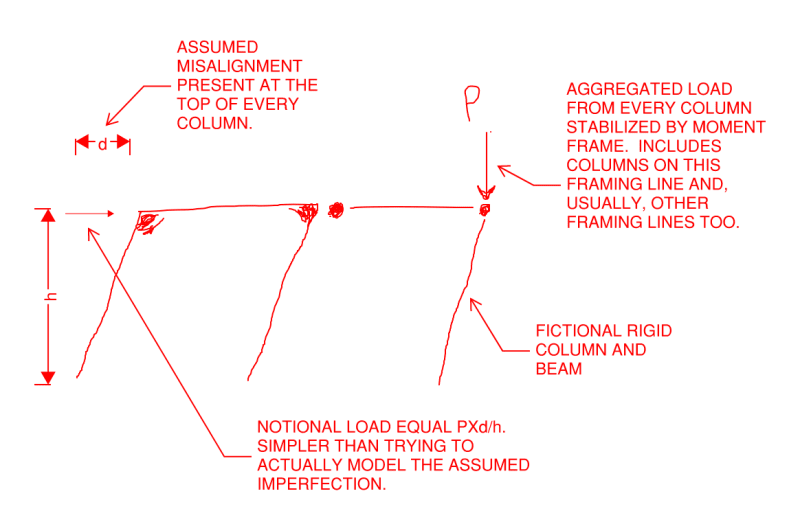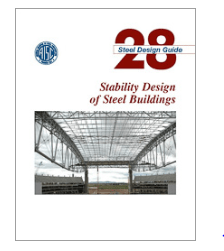Per section C2 in AISC 360-10, the use of notional loads is required to represent initial imperfections in the stability of the structure.
Does this also apply to columns that support gravity-only loads (ie, not part of a braced or sway frame). I thought the imperfections on these columns were already handled through the reduction applied in the critical buckling stress equations (both elastic and inelastic). How would this apply to a column that is gravity only and pinned at the top and bottom?
My understanding is that these sorts of columns do not require moment amplification as B1 is not applied to members that lack applied moments. If a notional load is required that represents a moment due to a "modeled imperfection", are we saying that ALL columns, regardless if they are not intended to support an applied moment, need to have minimum moments applied and thus also need to consider moment magnification?
Does this also apply to columns that support gravity-only loads (ie, not part of a braced or sway frame). I thought the imperfections on these columns were already handled through the reduction applied in the critical buckling stress equations (both elastic and inelastic). How would this apply to a column that is gravity only and pinned at the top and bottom?
My understanding is that these sorts of columns do not require moment amplification as B1 is not applied to members that lack applied moments. If a notional load is required that represents a moment due to a "modeled imperfection", are we saying that ALL columns, regardless if they are not intended to support an applied moment, need to have minimum moments applied and thus also need to consider moment magnification?


